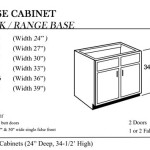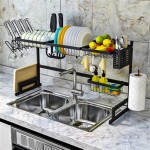The Undermount Sink and Butcher Block Countertop Combination: A Comprehensive Guide
The combination of an undermount sink with a butcher block countertop presents a unique blend of rustic charm and modern functionality. The butcher block, prized for its warmth and natural aesthetic, provides a visually appealing work surface. The undermount sink, known for its clean lines and ease of cleaning, integrates seamlessly beneath the countertop. This pairing, however, requires careful planning and understanding of the materials involved to ensure a successful and long-lasting installation.
Butcher block countertops are typically constructed from hardwood strips, such as maple, oak, walnut, or cherry, bonded together to create a solid surface. This construction method contributes to the countertop’s strength and durability. However, wood, being a natural material, is susceptible to moisture damage. Undermount sinks, inherently installed beneath the countertop, present a greater risk of water exposure to the cut edges of the butcher block around the sink opening. Therefore, mitigating this risk is paramount to the project's success.
The undermount sink, in contrast to a drop-in or top-mount sink, is installed from underneath the countertop. This mounting style offers a seamless transition between the countertop and the sink basin, creating a smooth, uninterrupted surface. This design eliminates the lip of a top-mount sink, preventing the accumulation of debris and simplifying cleaning. However, the exposed edge of the butcher block around the sink opening requires careful sealing and maintenance to prevent water damage and potential warping or rotting.
Key Considerations Before Installation
Before embarking on an undermount sink and butcher block countertop project, several critical factors must be taken into account. These considerations involve material selection, proper sealing techniques, and understanding the ongoing maintenance required to preserve the integrity of the countertop.
Firstly, the choice of wood species for the butcher block is essential. Hardwoods like maple and oak are generally preferred due to their density and resistance to wear. Softer woods may be more prone to scratching and denting. The grain orientation is also a factor. Edge-grain butcher block, where the edge of the wood strips is exposed, offers greater stability and resistance to warping compared to face-grain butcher block. End-grain butcher block, where the ends of the wood strips are exposed, is often used for cutting boards due to its self-healing properties, but it is less common for countertops due to its higher cost and more porous nature.
Secondly, the selection of a suitable sealant is critical. A waterproof sealant specifically designed for wood is necessary to protect the exposed edge of the butcher block around the sink opening. This sealant should be food-safe and resistant to mold and mildew growth. Applying multiple coats of sealant, following the manufacturer's instructions, is crucial to creating a robust barrier against moisture penetration. Regular reapplication of the sealant, typically every 6-12 months, is essential to maintain the protective layer.
Thirdly, understanding the ongoing maintenance requirements is necessary for preserving the beauty and longevity of the butcher block countertop. Regular cleaning with a mild soap and water solution is recommended. Avoid using abrasive cleaners or harsh chemicals, as these can damage the wood finish. Promptly wipe up any spills, especially water, to prevent staining and water damage. Periodic oiling with a food-grade mineral oil is necessary to replenish the wood's natural oils and prevent it from drying out and cracking.
Installation Process: A Step-by-Step Overview
The installation of an undermount sink with a butcher block countertop requires precision and attention to detail. Proper execution of each step is critical to ensuring a watertight and aesthetically pleasing result. While professional installation is recommended, understanding the process can help homeowners make informed decisions and monitor the quality of the work.
The first step involves cutting the sink opening in the butcher block countertop. This requires careful measurement and marking, using the sink manufacturer's template as a guide. A jigsaw or router can be used to make the cut, ensuring a clean and accurate edge. It is crucial to use a sharp blade and to work slowly and steadily to prevent splintering or chipping of the wood.
Once the sink opening is cut, the edges of the butcher block must be thoroughly sealed. This involves applying multiple coats of waterproof sealant, allowing each coat to dry completely before applying the next. Special attention should be paid to the underside of the countertop around the sink opening, as this area is most susceptible to water exposure. The sealant should be applied generously, ensuring complete coverage of the exposed wood.
The next step is to attach the undermount sink to the countertop. This typically involves using epoxy or silicone adhesive, along with mounting clips or brackets. The adhesive is applied to the rim of the sink and the underside of the countertop, and the sink is carefully positioned in the opening. The mounting clips or brackets are then used to secure the sink in place, ensuring a tight and even seal. Excess adhesive should be wiped away immediately.
After the adhesive has cured completely, the plumbing connections can be made. This includes connecting the drain, supply lines, and any other necessary plumbing fixtures. It is essential to use Teflon tape or pipe dope on all threaded connections to prevent leaks. The plumbing connections should be checked thoroughly for leaks before putting the sink into regular use.
Addressing Potential Challenges and Common Mistakes
While the undermount sink and butcher block countertop combination can be visually appealing and functional, several potential challenges and common mistakes can arise during the installation process. Being aware of these issues and taking preventative measures can help ensure a successful outcome.
One common mistake is neglecting to properly seal the edges of the butcher block around the sink opening. Insufficient sealing can lead to water penetration, causing the wood to swell, warp, or even rot. It is crucial to use a high-quality waterproof sealant and to apply multiple coats, ensuring complete coverage of the exposed wood. Regular reapplication of the sealant is also essential to maintain the protective barrier.
Another potential challenge is the weight of the butcher block countertop. Butcher block can be quite heavy, especially if it is thick and made from a dense wood species. The cabinet base must be able to support the weight of the countertop, along with the sink and any items placed on the countertop. Reinforcing the cabinet base may be necessary to prevent sagging or structural damage.
Furthermore, improper installation of the undermount sink can lead to leaks and water damage. It is crucial to use a high-quality adhesive and to follow the sink manufacturer's instructions carefully. The mounting clips or brackets must be properly tightened to ensure a tight and even seal between the sink and the countertop. The plumbing connections must also be checked thoroughly for leaks before putting the sink into regular use.
Finally, neglecting regular maintenance can shorten the lifespan of the butcher block countertop. Regular cleaning with a mild soap and water solution is recommended. Avoid using abrasive cleaners or harsh chemicals, as these can damage the wood finish. Promptly wipe up any spills, especially water, to prevent staining and water damage. Periodic oiling with a food-grade mineral oil is necessary to replenish the wood's natural oils and prevent it from drying out and cracking. Addressing these challenges and avoiding common mistakes are critical for a successful installation and long-term satisfaction with the undermount sink and butcher block countertop combination.

Butcher Block Countertops With A Sink J Aaron

How To Install Diy Butcher Block Countertops With Undermount Sink

Best Kitchen Sink Styles For Butcher Block Countertops Hardwood Reflections

How To Install An Undermount Kitchen Sink On Butcher Block Countertop Skoolie

Undermount Sink Butcher Block Counter Traditional Kitchen Birmingham Nz

Oak Butcher Block With Undermount Sink Maintenance D Oh I Y
Installing Butcher Block Counters With An Undermount Sink A Beautiful Mess

My Butcher Block Countertops Two Years Later Wildfire Interiors

How To Install Diy Butcher Block Countertops With Undermount Sink

Bathroom Butcher Block Counter With Undermount Sink







